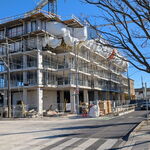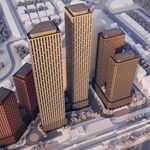What do you think "complete fare integration" means?
Simple...to make this work there will be fare integration. You just may not think its fair.
All of the TTC will be subject to the same rules. Distance based fares, low/mid/rush premiums, etc. Then there is true fare integration!
Which I think is fair. If I decide to get downtown at 8 and read the newspaper and have a coffee for 1/2 hr before I start work I should pay less for the subway compared to someone who tries to get downtown for 8:30 or 9 when everything is at capacity.
If I decide to live 5km from work I should not have to pay as much as someone who is living 15 km from work.
....if people are worried about the less well off I agree there should be a mechanism for a rebate but this should not impact the base price of a ticket which everyone else uses (i.e. not showing up on the TTC budget). Working poor could be subsidized from home to work. Students could be subsidized home to school only (and not other routes). Unemployed/Seniors could be subsidized on distance but would not get a discount for the rush hour.
Good example will be Ossington Stn to St Andrew Stn. 5 km in total. Normal price will be $1 flat fee plus $0.15/km plus $0.25 for 1 transfer. Totals $2.00. Rush hour (AM based on when you tap off the system, PM is based on when you tap on) would cost $2.50 plus $0.25/km plus $0.25 for 1 transfer. Totals $4.00.
But if you live in King West (2.5 km) it would cost $1.40 and $3.10 respectively (I would walk in rush-hour which is the intended result).
If you live a decent way out (Weston...17km) it would cost $3.55 on SmartTrack with no tranfer. If you wanted to take the subway 1 stop you would have to fork out $0.25 (or if you took the bus/subway). Rush hour would cost more but not double...$6.75. Current price on GO (with Presto) is $4.80.
Ideally GO, TTC, MiWay, etc all implement the same rate card. And the $$$ need to be analyzed to confirm that system-wide there should be no change in the subsidy (up or down). There may be shifts from one transit system to another but that can be worked out via how they divide up the base fare (the $1 or $2.50...which a portion of which is used to fund Presto)




